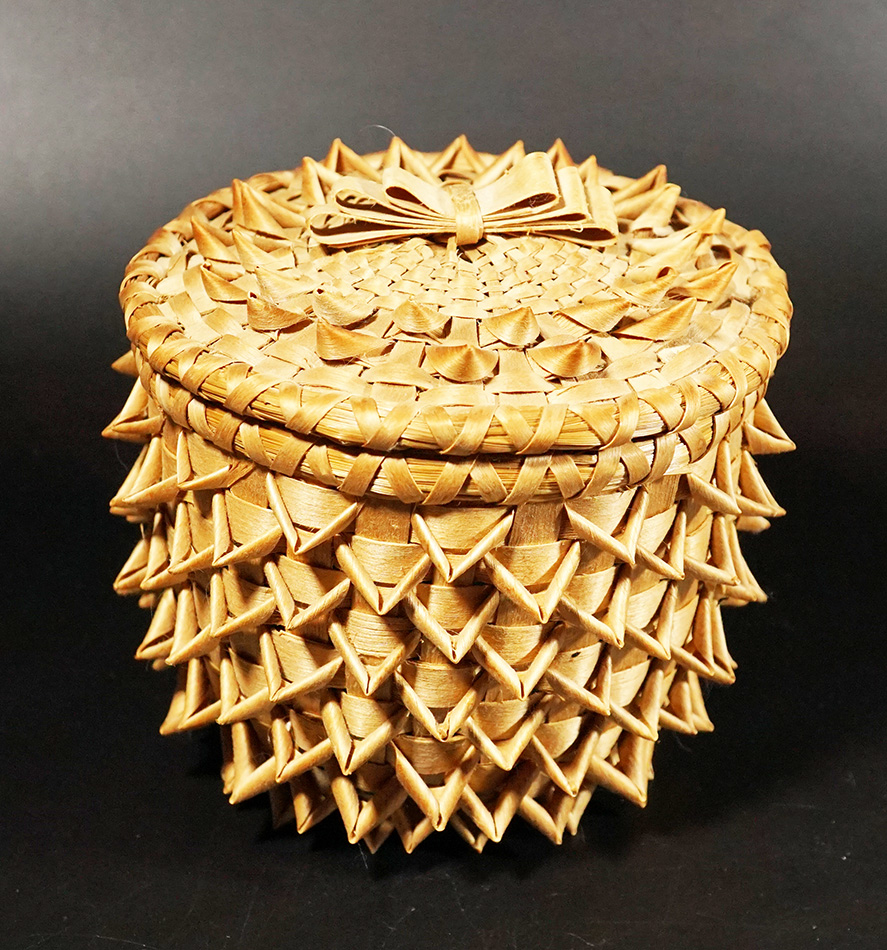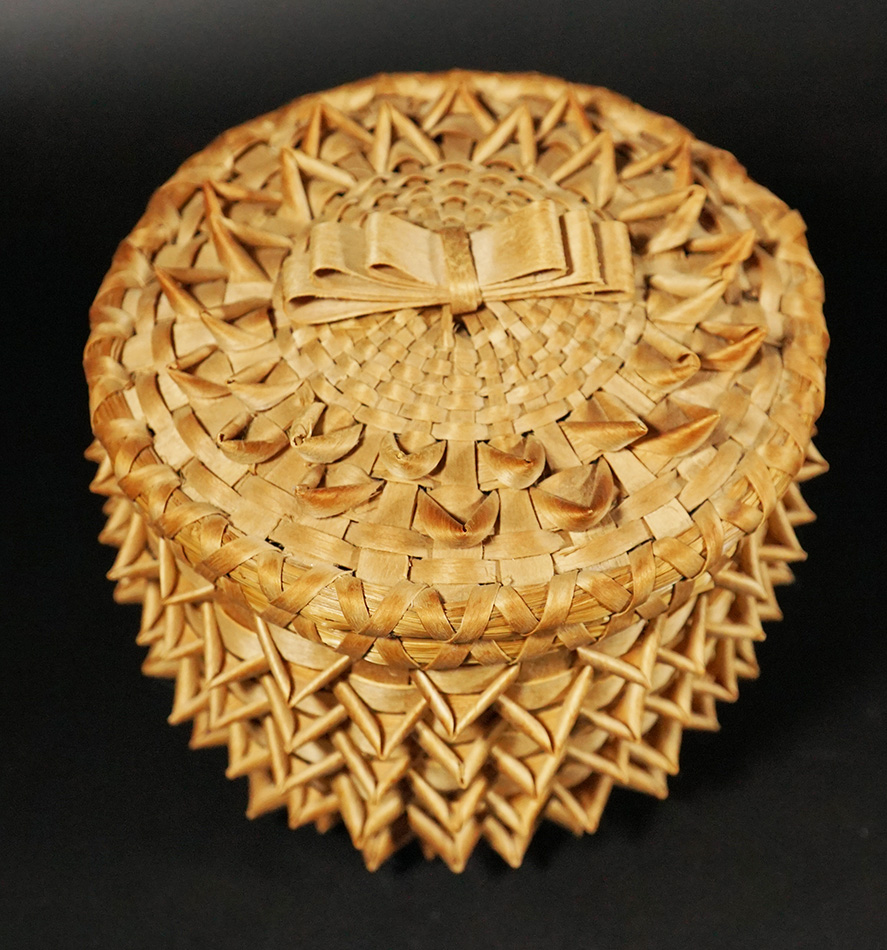
Echoes in the Ash: The Enduring Art of Passamaquoddy Basket Making
In the quiet, ancient forests of Maine and Atlantic Canada, where the Penobscot, Maliseet, Micmac, and Passamaquoddy peoples have lived for millennia, there exists a profound and living art form: the weaving of baskets from brown ash. For the Passamaquoddy Nation, one of the four tribes of the Wabanaki Confederacy, basket making is not merely a craft; it is a sacred practice, a tangible link to their ancestors, a source of cultural identity, and a testament to their enduring resilience. It is a story woven into every splint, a whisper of tradition carried on the scent of sweetgrass, and a powerful statement of sovereignty in an ever-changing world.
This intricate art, passed down through generations, is facing its most existential threat in centuries: the emerald ash borer (EAB). Yet, even as this invasive beetle ravages the very trees that are the lifeblood of their craft, Passamaquoddy basket makers are finding new ways to adapt, preserve, and pass on their heritage, ensuring that the echoes in the ash continue to resonate.

From Forest Floor to Family Legacy
The journey of a Passamaquoddy basket begins long before a single splint is woven. It starts with the meticulous selection of the right tree: the brown ash, or Fraxinus nigra, known to the Wabanaki as the "basket tree" or "black ash." Unlike other trees, the brown ash has a unique property: when pounded, its growth rings separate into long, thin, pliable strips perfect for weaving.
"Finding the right tree is the first prayer," explains Molly Neptune Parker, a revered Passamaquoddy Elder and master basket maker who passed in 2020, whose words still guide many. "You ask permission from the tree. You thank it for its sacrifice. It’s a living thing, and it’s giving its life for our art, for our people." This deep reverence for the natural world is fundamental to the entire process.
Once a suitable tree is identified – typically a straight-grained, knot-free specimen – it is felled with care. The real work then begins: the laborious, rhythmic process of pounding. Using a dull mallet, often a heavy axe head turned on its side, the trunk is pounded along its length. This percussive force separates the annual growth rings, which are then peeled off in long, wide strips. It’s a physically demanding task that requires immense strength, stamina, and a keen ear for the subtle sounds of the wood.
"The rhythm of the pounding is like a heartbeat," says Passamaquoddy basket maker George Neptune, Molly Neptune Parker’s grandson and a celebrated artist in his own right. "It’s meditative. You’re not just breaking the wood down; you’re connecting to it, preparing it, listening to what it wants to become."
After the splints are peeled, they are further prepared. They are split to the desired thickness, often using a knife or a specialized splitting tool, then gauged for uniform width. The inner side of each splint is scraped smooth, removing any remaining pith and preparing it for weaving. The outer, bark side is often left with its natural texture or carefully dyed using natural materials like berries, roots, or even rusted metal for rich, earthy tones.
The Weave and the Whisper of Sweetgrass
With the splints prepared, the true artistry begins. Passamaquoddy baskets come in a vast array of shapes, sizes, and purposes, each reflecting centuries of adaptation and innovation. There are practical "utility" baskets designed for everyday use – burden baskets for carrying firewood or harvests, berry baskets perfect for gathering wild fruits, or fishing creels. These often feature strong, tight weaves and sturdy handles.

Then there are the "fancy" baskets, which are exquisite works of art renowned for their intricate weaves, delicate forms, and the unmistakable aroma of sweetgrass (Hierochloe odorata). Sweetgrass, a sacred plant to many Indigenous peoples, is gathered in coastal areas and braided into thin strands that are then incorporated into the weaving, creating a beautiful contrast in color and texture with the dark ash splints. The fragrant sweetgrass not only adds a unique aesthetic but also carries spiritual significance, symbolizing peace, healing, and connection to the earth.
"Sweetgrass isn’t just a material; it’s a blessing," notes Sarah Sockbeson, a Penobscot basket maker whose work often incorporates contemporary designs while honoring traditional techniques. "It brings its spirit, its warmth, its beauty into the basket. It reminds us of our connection to creation."
The weaving techniques themselves are complex and varied. Traditional weaves include the plaited weave (a simple over-under pattern), the twill weave (creating diagonal patterns), and more intricate patterns like the checkerboard or hexagonal weaves. The skill lies not only in the precise execution of the weave but also in shaping the basket as it grows, ensuring its balance, symmetry, and structural integrity. Each basket is a unique creation, reflecting the individual style and spirit of the weaver.
Keepers of the Knowledge: A Living Tradition
For generations, basket making has been an intergenerational practice, with knowledge, techniques, and stories passed down from elders to youth. Children learn by watching, by helping prepare materials, and by attempting their first weaves under the watchful eyes of their grandparents or parents. This intimate, hands-on transmission of knowledge is vital to the survival of the art.
"My grandmother taught me. Her grandmother taught her," explains Theresa Hoffman, a Passamaquoddy basket maker. "It’s not just about how to weave; it’s about the stories, the songs, the language that goes with it. It’s about who we are." This continuity is a powerful act of cultural preservation, especially in the face of historical attempts to suppress Indigenous languages and traditions.
Many Passamaquoddy basket makers are celebrated artists whose work is exhibited in museums and galleries across the country. Their baskets are highly sought after, not just for their beauty and craftsmanship but for the deep cultural narratives they embody. This economic aspect is also crucial, providing livelihoods for families and contributing to the Nation’s economic self-sufficiency.
A Fragile Future: The Emerald Ash Borer Threat
Despite its enduring strength, Passamaquoddy basket making faces an unprecedented crisis: the emerald ash borer (EAB). This invasive beetle, accidentally introduced to North America from Asia, has decimated ash tree populations across the continent. Its larvae tunnel under the bark, disrupting the tree’s ability to transport nutrients and water, leading to its death within a few years.
For a tradition so intrinsically linked to a single tree species, the EAB poses an existential threat. "It’s terrifying," admits Suzanne Greenlaw, a Maliseet scholar and basket maker. "This isn’t just about losing a material; it’s about losing a way of life, losing our connection to the land, losing the knowledge that comes with working with that specific tree." The rapid spread of EAB means that sourcing suitable brown ash for basketry is becoming increasingly difficult, forcing weavers to travel further, seek out new, uninfected stands, or experiment with other materials – a significant departure from centuries of practice.
The urgency of the situation has prompted various responses. Scientists, foresters, and Indigenous communities are collaborating on efforts to monitor EAB, breed resistant ash varieties, and explore methods for sustainable harvesting and forest management. Some weavers are carefully harvesting ash from affected areas before the trees die completely, using what they can, while others are planting ash seedlings in hopes of future generations of trees.
Resilience and the Path Forward
Yet, even in the face of such a profound threat, the spirit of Passamaquoddy basket makers remains unbroken. Their history is one of adaptation and resilience, and this challenge is no different. Efforts are underway within the community and with external partners to ensure the survival of this vital art form.
Workshops and apprenticeships are being revitalized, with elders dedicating themselves to teaching as many young people as possible, not just the weaving techniques but also the spiritual and cultural protocols associated with the ash tree and the craft. Educational programs are being developed to raise awareness about the EAB and its impact, both environmentally and culturally.
"We are survivors," affirms Donald Soctomah, the Passamaquoddy Nation’s Tribal Historic Preservation Officer. "Our ancestors faced much worse, and they always found a way. This basket tradition is part of our DNA. We will not let it die."
Some weavers are exploring innovative approaches, incorporating new materials while still honoring traditional forms, or focusing on preserving the knowledge of the process itself, even if the primary material becomes scarce. The emphasis is on flexibility and ensuring that the practice of basket making, with its deep cultural roots, continues to thrive.
The Passamaquoddy basket is more than an object; it is a living embodiment of cultural continuity, an intricate weave of history, spirit, and skill. As the emerald ash borer encroaches, the future of this ancient art hangs in a delicate balance. Yet, the determination of the Passamaquoddy people, their profound connection to the land, and their unwavering commitment to their heritage offer a powerful message of hope. Every new basket woven, every splint prepared, every story shared, is an act of defiance, a promise kept, and a vibrant echo of a culture that continues to flourish against all odds, reminding us that true art is not just about beauty, but about survival.


